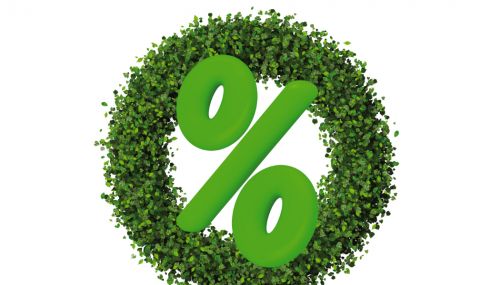All
Higher Blends of Biodiesel Take Center Stage

As NORA expands its research on B50 and B100, environmentalists finally consider the potential of biodiesel
National Renewable Energy Laboratory (NREL) released a study in September 2024 that determined “A switch to using higher percentages of biomass-based diesel fuels would reduce the amount of greenhouse gasses emitted by the transportation sector.”
The International Energy Administration (IEA) looks at global renewables growth and notes that “Heat pumps and solar thermal and geothermal heating systems have low operating costs, but they entail a considerable investment for households, so sales are particularly sensitive to borrowing costs and consumer sentiment.”
The same report notes, “Bioenergy accounts for almost all renewable fuel growth through 2030. Bioenergy use expands the most in industry, followed by transport and then buildings. Modern bioenergy is less expensive than hydrogen and e-fuels, and strong policy support is already in place in many regions. For instance, more than 60 countries have liquid biofuel policies, whereas only the European Union and the United Kingdom have e-fuel requirements.” (Renewables 2024, Analysis and forecast to 2030, International Energy Agency, October 2024)
And even “Biotechnology for Biofuels and Bioproducts” released an article in October, titled “Biofuel production: exploring renewable energy solutions for a greener future,” that determined, “One of the most significant environmental benefits of biofuels is their ability to minimize greenhouse gas (GHG) emissions compared to fossil fuels.”
The article continued, “Biofuels have the potential to enhance air quality by lowering pollution emissions. Biofuels produce lower amounts of sulfur dioxide, particulate matter, and nitrogen oxides than fossil fuels, all of which have been linked to respiratory and cardiovascular problems.” Furthermore, it continued, “Government regulations and incentives are critical in advancing the biofuel business. Mandates, tax credits, subsidies, loan guarantees, and renewable fuel requirements are all possible options. Supportive policies provide a favorable market environment, encourage investment, and provide stability to biofuel producers. The degree and length of governmental assistance can have a substantial influence on the market potential of biofuels.” (El-Araby, R. Biofuel production: exploring renewable energy solutions for a greener future. Biotechnol Biofuels 17, 129 (2024). https://doi.org/10.1186/s13068-024-02571-9)
Suddenly, the benefits of biofuels and biofuel blends are news. The press release for NREL report even included the following statement:
“It’s amazing to me, but there are thousands of papers published every year on biodiesel, and almost nobody looks at blends over 20 percent,” said NREL Senior Research Fellow Robert McCormick, corresponding author of the newly published research paper “Properties That Potentially Limit High-Level Blends of Biomass-Based Diesel Fuel,” which appears in the journal Energy & Fuels. “This research addresses a major data gap about biodiesel blends, both because it looks at high-level blends and because it looks at blends with renewable diesel as well as petroleum diesel.”
A major data gap on blends above B20? That could come as a surprise for many in the renewable liquid heating fuels industry! NORA and Dr. Thomas Butcher have been studying the properties of higher biodiesel blends for years.
“It’s funny that Bob (McCormick) said that,” Butcher responded. “We work with NREL. But he’s looking at transport options. The thing is, compared with all the others, we’re moving so much faster. We are in front of transportation and other renewable fuels, renewable natural gas, renewable propane. It’s a cool position to be in. They are a good decade behind where we are in terms of progress.”
What’s New, What’s Notable
Ask Butcher for more information on his research, and he will tell you that every research study is exciting and important. NORA has spent the last two years running B100 in 24 sites for heating research. They take quarterly fuel samples and regularly inspect burner heads and service records. “We’re really trying to understand them like a doctor would a critical patient, to understand how they’re doing over time,” he says. These field tests also act as test sites for burner manufacturers, who get real world results and can make the necessary adjustments to improve performance burning higher biodiesel blends.
Butcher told Oil & Energy about a new field study on blends of renewable diesel (RD) and biodiesel. “Here’s a way to get us to totally renewable fuels even with blends. We can get the benefits of renewable diesel with the benefits of biodiesel.”
The new field study has a target of 150 homes, some using R50/B50 blends and others using R80/B20. The large test pool offers NORA a chance to collect results from a more diverse set of appliances. “It’s not enough to know things go well in some units,” Butcher says. “We need to know they go well in all units.”
The other “big” study on tap for NORA is focused on outside storage for B100 or high biodiesel blends. Butcher points to the “future-oriented” focus of this research. NORA is looking to be ready for market conditions in 10 years or so, when higher blends will be the norm. While he believes that the work being done on additives for B50 blends or higher is very exciting and shows a lot of promise, his teams are looking at heated storage options. At the CEMA site in Connecticut, they are exploring the feasibility of heaters inside the storage tanks; and at SUNY Morrisville in the Adirondacks, they are studying tanks inside insulated enclosures with air heaters. “I’m really looking forward to the colder weather to get more data on these tests,” Butcher says. “A lot of our field work goes slow in the summer because the fuel turnover isn’t there.”
Getting to Net Zero
Since the first Industry Summit in 2019, the liquid heating fuels industry has been focusing on the path to net-zero emissions. The Biotechnology study is on board, noting that heating remains the primary end-use sector, and “combining biofuels with other renewable energy sources (hybrid systems) such as wind and solar power and hydropower, can contribute to a more sustainable and dependable energy system.”
Once again, NORA was there first. Butcher’s personal residence is also NORA’s first Net-Zero Carbon Home. The data continues to prove that B100 heating, combined with solar for non-heating electricity, can result in net-zero carbon emissions, at a lower upfront investment and a quicker return than other options, such as the “all electric” model.
There are several commercial and residential sites lined up to participate in the Net-Zero study. The different types of properties, locations, and equipment will help prove that reaching net-zero with renewable fuels is a successful and replicable option.
Getting There
All this testing of higher blends of biodiesel will be moot if retailers do not offer the lower carbon fuels to their customers. For some, this might soon become a necessity to meet regional, state, or federal carbon reduction or clean heat regulations.
Butcher suggests that these dealers look at their supply options and ensure they can consistently procure good quality biodiesel or blended fuels. At the same time, the dealer needs to consider its environment, the number of outdoor vs. indoor tanks, and the new fuel’s cold flow properties.
Butcher further notes that some companies slowly build up their blend levels while others convert directly to higher blends, but both transitions will take place over the course of several months, as the biodiesel blends will be delivered to tanks that are holding traditional or lower blend fuels. There is a similar transition with the equipment and components. While B100 products are now readily available – filters and gaskets, flex lines, safety valves – these are changed only as the older items need replacement.
In closing, Butcher is, as always, optimistic. “I would say, we’re – our industry has moved on much faster than others in adopting renewable fuels. We should be proud of that, and I’m really excited about the potential for the future.”
Related Posts
 How to Set Your Business Apart with Renewable Propane
How to Set Your Business Apart with Renewable Propane
Posted on October 16, 2025
 EIA Report: Biodiesel and Renewable Diesel Imports Fall Sharply
EIA Report: Biodiesel and Renewable Diesel Imports Fall Sharply
Posted on October 16, 2025
 Northeast Liquid Fuel Providers Put Higher Bioblends in Focus
Northeast Liquid Fuel Providers Put Higher Bioblends in Focus
Posted on August 19, 2025
 Lower Carbon Lineup Puts Businesses on the Path to Net Zero Goals
Lower Carbon Lineup Puts Businesses on the Path to Net Zero Goals
Posted on August 18, 2025
Enter your email to receive important news and article updates.
